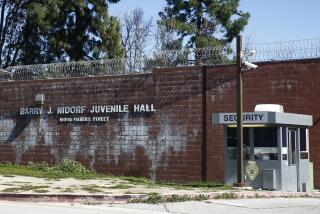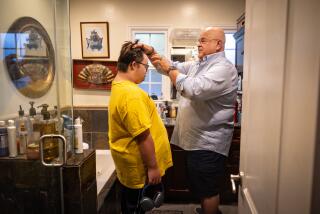New Paths After School
- Share via
If the federal government is going to spend enormous sums on 7,500 after-school centers, taxpayers should get their money’s worth. That would mean programs that give kids a safe place to stay after school in which they do their homework and receive academic help, along with opportunities for recreation and obesity-fighting exercise.
But little of that was happening in the 21st Century Community Learning Centers, according to a rigorous $3-million study released in February. As a result of the study, the U.S. Department of Education recently took the heartening step of launching a broad-based study aimed at improving these and perhaps all after-school programs. A handful of the 21st Century centers, run by various groups and school districts, are in the Los Angeles area.
The study, issued in February by Mathematica Policy Research of Princeton, N.J., found that $1 billion a year was going toward largely unappealing programs. The 21st Century centers (the L.A. centers were not part of the study) weren’t improving most students’ achievement. They weren’t even making students do their homework.
Researchers described programs in which teachers acted as glorified baby-sitters, overseeing study halls but providing little help and seldom checking student work. Recreation offerings were drab and sporadic. The centers weren’t even warehousing children effectively. Middle-school children were so uninterested in their schools’ centers that they attended only once a week on average.
Funding based on science -- such as the Mathematica study -- is the new trend in government. Indeed, too much money has been squandered on swell-sounding programs that don’t work. The DARE anti-drug curriculum is a perfect example.
The Education Department acted constructively and wisely on the Mathematica study, recently paying for a three-year effort to fix the after-school centers. The $9.6-million contract will involve several education institutions, including UCLA, that will seek to help 1,600 centers devise attractive programs and boost their academic offerings.
Researchers will examine well-functioning centers to develop a better understanding of effective after-school practices -- something that has never been done despite the millions of private and public dollars going into such programs at the state and local levels, beyond the federal funding.
President Bush used the Mathematica study in calling for a 40% cut in the 21st Century program. But it made no sense to try to tear down programs that his administration was working to improve. Fortunately, Congress rejected any cuts, clearing the way to create an after-school program that works for its public money.
More to Read
Sign up for Essential California
The most important California stories and recommendations in your inbox every morning.
You may occasionally receive promotional content from the Los Angeles Times.













